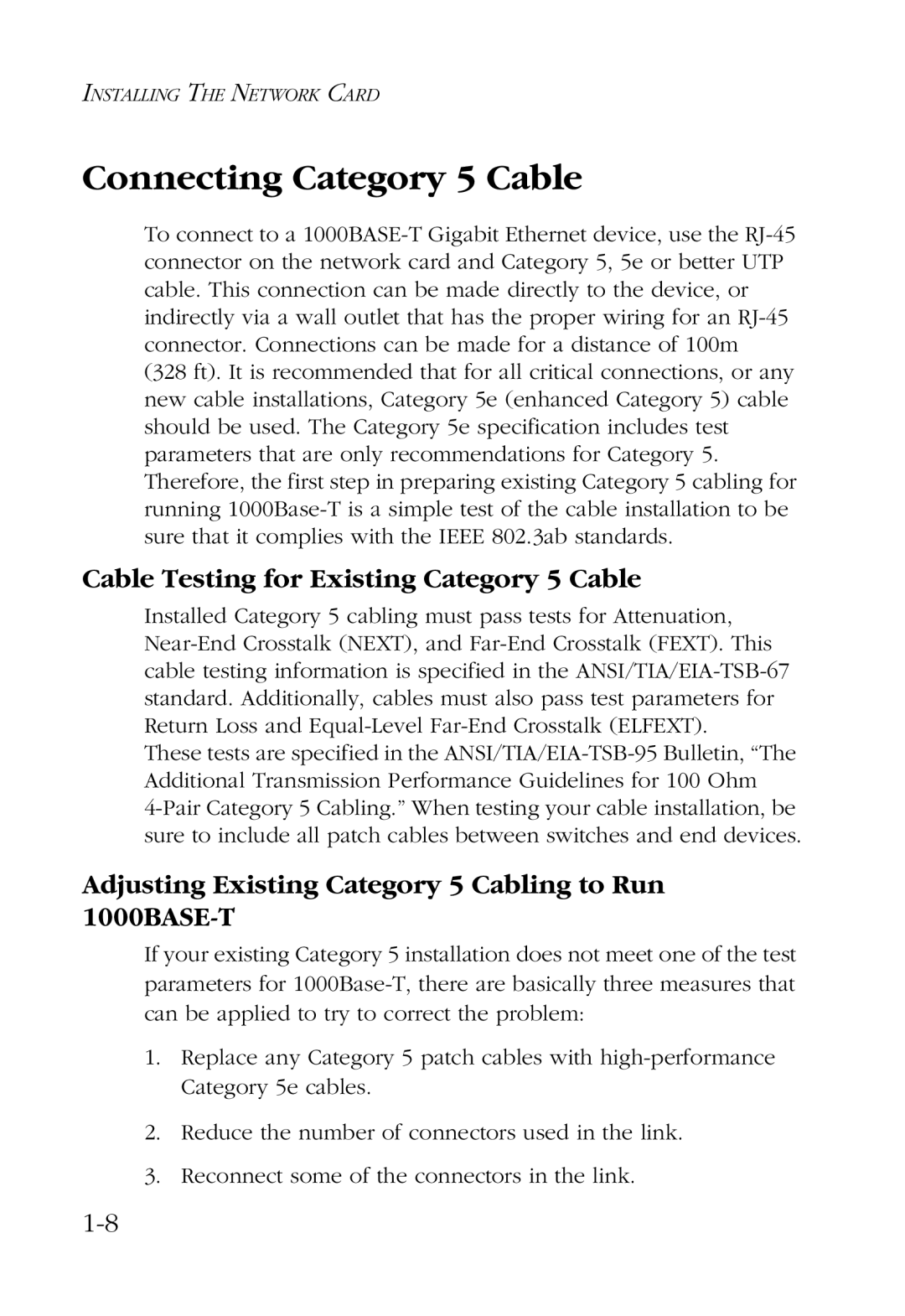INSTALLING THE NETWORK CARD
Connecting Category 5 Cable
To connect to a 1000BASE-T Gigabit Ethernet device, use the RJ-45 connector on the network card and Category 5, 5e or better UTP cable. This connection can be made directly to the device, or indirectly via a wall outlet that has the proper wiring for an RJ-45 connector. Connections can be made for a distance of 100m
(328 ft). It is recommended that for all critical connections, or any new cable installations, Category 5e (enhanced Category 5) cable should be used. The Category 5e specification includes test parameters that are only recommendations for Category 5. Therefore, the first step in preparing existing Category 5 cabling for running 1000Base-T is a simple test of the cable installation to be sure that it complies with the IEEE 802.3ab standards.
Cable Testing for Existing Category 5 Cable
Installed Category 5 cabling must pass tests for Attenuation, Near-End Crosstalk (NEXT), and Far-End Crosstalk (FEXT). This cable testing information is specified in the ANSI/TIA/EIA-TSB-67 standard. Additionally, cables must also pass test parameters for Return Loss and Equal-Level Far-End Crosstalk (ELFEXT).
These tests are specified in the ANSI/TIA/EIA-TSB-95 Bulletin, “The Additional Transmission Performance Guidelines for 100 Ohm
4-Pair Category 5 Cabling.” When testing your cable installation, be sure to include all patch cables between switches and end devices.
Adjusting Existing Category 5 Cabling to Run 1000BASE-T
If your existing Category 5 installation does not meet one of the test parameters for 1000Base-T, there are basically three measures that can be applied to try to correct the problem:
1.Replace any Category 5 patch cables with high-performance Category 5e cables.
2.Reduce the number of connectors used in the link.
3.Reconnect some of the connectors in the link.
